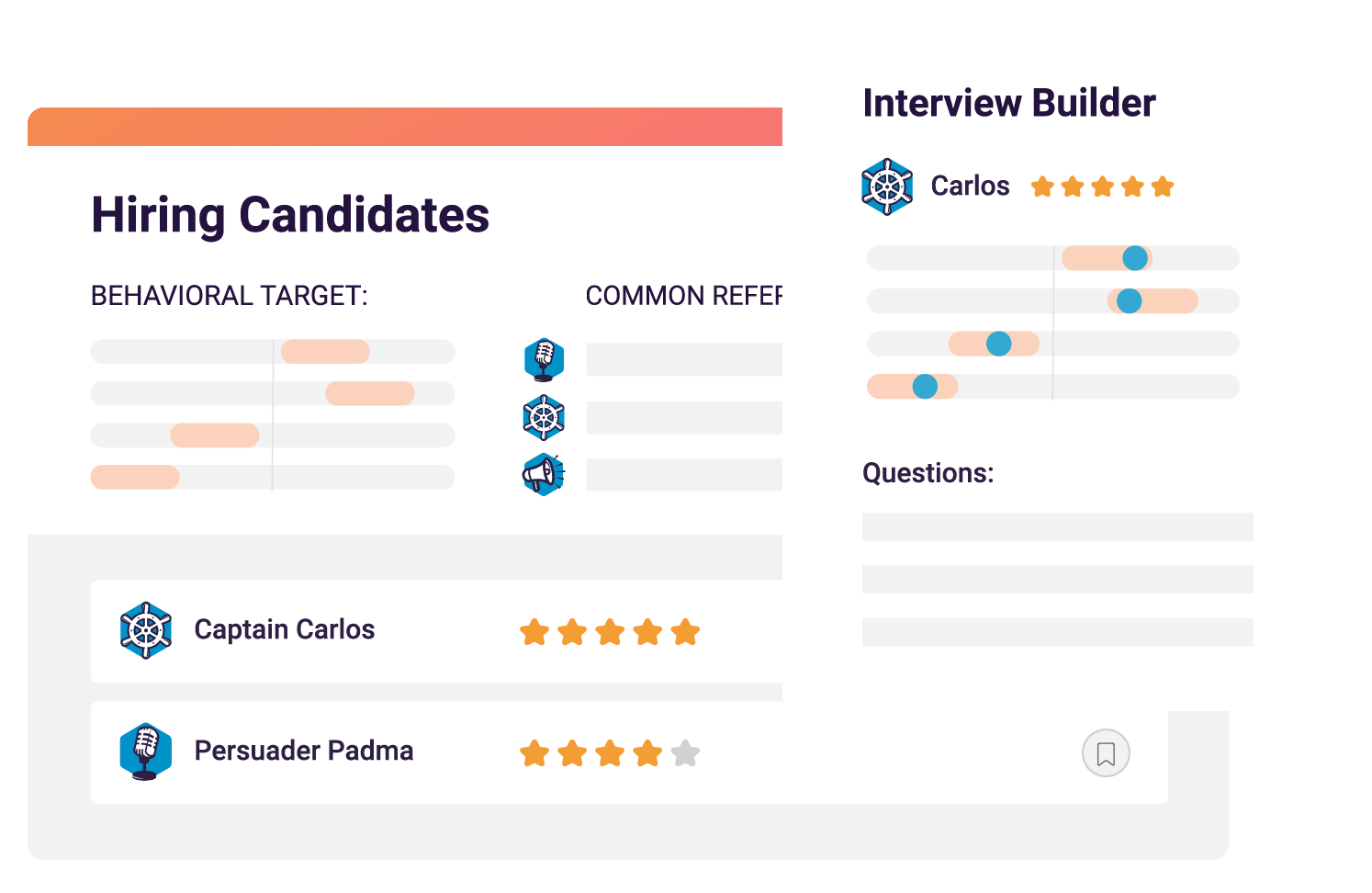Every leader has their idea of the perfect team—a group with the skills, personalities, and competencies to achieve any goal. And while it’s easy to believe there’s a “right” way to assemble that Ocean’s Eleven team, that couldn’t be farther from the truth. Any team can be great—provided you understand their Team Type.
Learning about different Team Types in the workplace can help you put together the right group for the goal you’re pursuing. Whether you’re looking to drive innovation, improve efficiency, or encourage collaboration, there’s a Team Type that can help your organization address its needs.
What are Team Types?
A Team Type refers to the collective work style of a group of teammates. This work style is determined by the team’s unique makeup of employee behaviors.
According to PI’s science team, there are nine observable Team Types:
- Adapting
- Anchoring
- Bolstering
- Cultivating
- Executing
- Exploring
- Pathfinding
- Producing
- Stabilizing

Each Type Team differs in its natural behavioral strengths. For example, an Exploring Team tends to consist of big-picture thinkers and risk takers; this type of team often lends itself well to innovation and agility. By contrast, a Stabilizing Team typically consists of more detail-oriented, risk-adverse employees. For that reason, a Stabilizing Team can be relied on to improve efficiencies and build new processes.
Just as these Team Types have strengths, they also have caution areas to beware of. You likely wouldn’t ask a Stabilizing Team to brainstorm a new product, just as much as you wouldn’t ask an Exploring Team to actually build that product.
The key, then, is to understand the team you have, and the goals you’re pursuing. So long as your Team Type is aligned with your strategy, you set yourself—and your people—up for success.
Why are teams important in organizations?
Teams are formed for a variety of business functions, often with unique responsibilities, objectives, or skill levels. For instance, a leadership team comprised of managers can serve a wildly different purpose than a project team in terms of its scope of work, level of responsibility, and duration.
A project team may consist of groups of employees tasked with the specific project of bringing a new product to market and may be disbanded once that project has been completed.
A leadership team, by contrast, refers to a group of individuals in management positions from different departments. This team is often responsible for decision making and sharing information about the employees and projects they oversee with other managers and executives, and has no set “end date.”
By understanding your Team Type, as well as your team function, you can strategically structure work teams in a way that makes it easier to define and achieve shared goals.
Learn more about effective team building:
- Crush your team goals with PI Design’s Team Discovery.
- 5 ways PI Design can help you build winning teams

Different types of teams in the workplace
Most organizations have a wide range of team structures and functions. Teams may be grouped by role, department, work location, employment status, or project; you can even have teams within teams. In short, there’s no limit to the possible configurations when it comes to bringing employees together for a common purpose.
Here is a brief overview of the most commonly created teams:
Project teams
Project teams are made up of a group of individuals who often have different roles, tasks, and deadlines but who are all working together toward the same outcome. A project team is usually temporary.
Functional teams
The team members of a functional team typically share the same skills, are from the same department, or report to the same manager. Functional teams are usually permanent.
Cross-functional teams
Cross-functional teams consist of individuals who come from a variety of different departments and have a range of skills and expertise. These types of teams typically serve as a task force to solve problems or make decisions that require different types of input or experience.
Operational teams
Members of an operational team have roles and responsibilities that serve the purpose of supporting employees and/or teams so that they can work more efficiently and effectively. Tasks assigned to an operational team often relate to organizing and optimizing the workflow and processes of an organization in an effort to maximize productivity.
Virtual teams
With the rise of remote work, virtual teams have become more common. Virtual teams rarely work together in the same physical space, and their commonality lies in their offsite location. Online collaboration tools are especially important to keep these teams organized, informed, and communicating.
Self-managed teams
As indicated by the name, self-managing teams (also known as autonomous teams) don’t rely on a team leader or project manager for guidance. The team members are fully responsible for every aspect of the decision-making process, from deadlines and tasks to expectations and outcomes. The flexibility available to self-managed teams often results in creative problem-solving and an increase in overall productivity.
Problem-solving teams
A problem-solving team is usually similar to a project team—it’s a group of individuals with different skills or experience who are brought together from various departments to find a solution to a specific challenge or crisis. This team is usually (and hopefully) temporary in nature.
Leadership teams
As referenced above, leadership teams usually consist of managers, team leaders, or executives and exist to identify strategies to improve the organization, as well as provide a greater sense of company-wide cohesion by communicating about the different roles, projects, and updates from their respective departments.
Benefits of clearly defined team functions
Putting together a successful team involves more than assigning a common interest or activity to a group of employees. To create a fully optimized team, you should consider the scope of work, the competencies of employees, the soft skills, and the personality types of your group members, as well as the management style, tools, and processes that will support the team and its initiatives.
You may need a functional team, like a marketing team, to define your product’s messaging, but a cross-functional team might be necessary if that messaging includes product features or limitations that only a developer would fully understand or if the goal is to have feedback from customers inspire future developments.
Understanding the proposed team’s objectives and the skills, expertise, management style, and work environment necessary to achieve those goals are the first steps of team development.
How PI helps you leverage Team Types
Distrust, incompatibility, and miscommunication are all obstacles to having a cohesive and collaborative team. PI Design uses data to identify what motivates your team, as individuals and as a group, and provides you with a custom action plan to achieve success.
Here’s how it works:
- You: Take PI’s six-minute behavioral assessment, and learn how you work and manage best.
- Team: Discover your team’s collective strengths and caution areas, and reveal your specific Team Type.
- Strategy: Visualize the work to be done side-by-side with the capabilities of your team. Identify potential misalignment, and get instant insights to close the gap and crush your goals.
Even the smallest changes you make with PI Design can create a monumental impact on your team’s morale and productivity.








